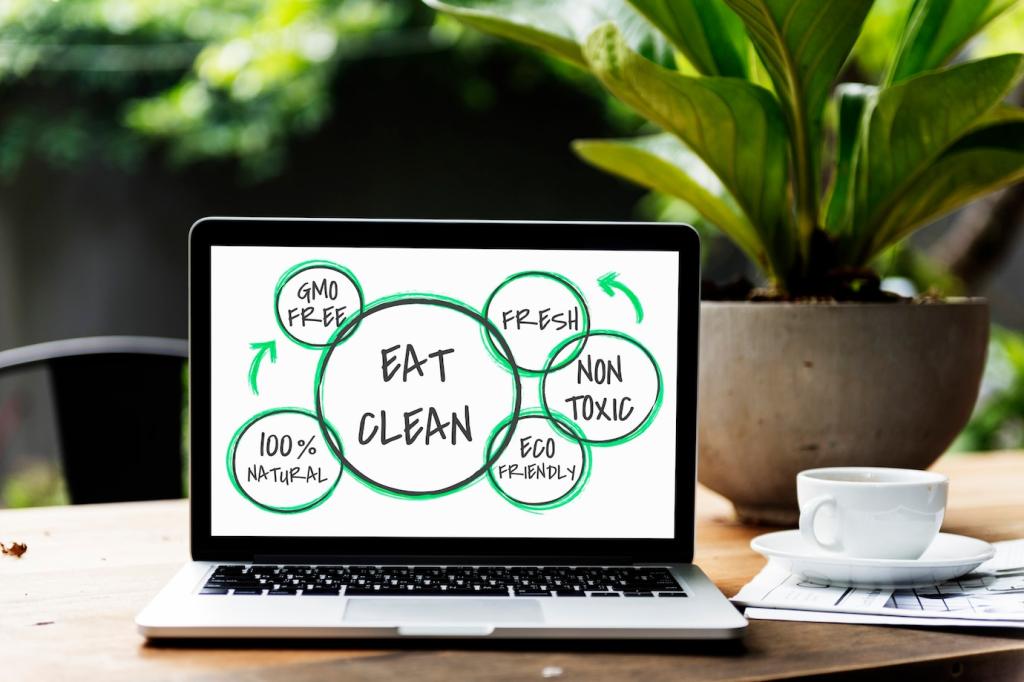Writing Persuasive Copy for Eco-Conscious Consumers
Chosen theme: Writing Persuasive Copy for Eco-Conscious Consumers. Dive into practical, inspiring strategies for crafting ethical, high-converting messages that honor sustainability values. Subscribe for fresh examples, and share your toughest messaging challenge so we can explore solutions together.
Understanding Eco-Conscious Consumers
01
Eco-conscious readers prioritize long-term impact, health, fair labor, and minimal waste. They crave clarity without hype, and reassurance that every dollar funds better practices. Ask your readers which value matters most, then reflect it consistently across headlines, bullets, and calls to action.
02
This audience often approaches sustainability claims with a raised eyebrow. They look for third-party proof, plain language, and transparent trade-offs. Invite them to ask hard questions in comments, and meet each concern with specifics, not slogans, to build cumulative trust over time.
03
A busy parent kept plastic under the sink for months, feeling guilty about the pile. One concise product page quantified bottles avoided and cost per use. That simple, honest framing converted faster than discounts. Encourage readers to share similar turning points you can mirror in copy.
Storytelling That Converts Without Compromise
Tell how a frustrating waste problem sparked your solution, then attach numbers to the breakthrough. Keep details concrete, like waste reduced per month. End with an invitation to participate, such as joining a pilot program or subscribing for behind-the-scenes updates that continue the narrative.
Show how your product eases real-life friction moments—packing lunches, sorting recycling, remembering refills. When readers recognize their day, motivation grows. Ask followers to submit their micro-moment, and promise to write a headline around it next week, crediting the contributor in your newsletter.
Contrast status quo with your better alternative using patient, respectful language. Illustrate a week, a month, and a year of small changes adding up. Close with a gentle prompt to try one step today, then reply with results so the community can learn collectively.

Decoding certifications and standards
Briefly explain what each certification means, what it checks, and any limitations. Link to the issuing body for verification. Encourage readers to bookmark a glossary page, and invite suggestions for additional standards you should cover to strengthen trust across your product pages.

Radical transparency in practice
Publish suppliers, materials, and shipping methods in accessible language. Acknowledge trade-offs, like higher cost for fair wages. Transparency turns skeptics into allies when paired with respectful tone. Invite subscribers to monthly transparency updates summarizing progress and setbacks, with room for questions and feedback.
Voice, Words, and Frames That Empower
Replace guilt triggers with agency. Try framing like Choose the bottle you refill, not the bottle you toss. People act when they feel capable and respected. Ask readers which empowering phrases resonate, then test those phrases within headlines and action buttons for consistent alignment.

Voice, Words, and Frames That Empower
Describe textures, scents, and durability in grounded terms—sturdy stainless steel, citrus-fresh, leak-tight seal. Anchor benefits to daily routines rather than abstract ideals. Encourage readers to submit sensory details from their experience so you can echo authentic language in future product descriptions.


Designing Ethical Calls to Action
Offer small, meaningful actions—try a sample, take a footprint quiz, or join a refill reminder. Micro-commitments reduce risk and build momentum. Invite readers to opt into a challenge series, then report back on progress for a community recap that celebrates real steps forward.
Designing Ethical Calls to Action
Shift from buy now to join us. Highlight repair groups, donation drives, or local pickups. Participation deepens identity and loyalty, which supports conversions later. Encourage sign-ups for community updates, and ask followers to nominate initiatives your brand should amplify this season.

Page Structure and UX That Support Green Decisions
Use short modules—What it replaces, Materials, Impact, Care, End of life. Repeat key proof points near CTAs. Encourage readers to audit their top page and comment which module visitors scroll to first, so we can tailor copy order to real behavior.
Testing, Learning, and Measuring Impact
Track assisted conversions, subscription quality, repeat purchase tied to refills, and engagement with transparency content. Consider an impact metric like items diverted from landfill per customer. Ask readers which metric they struggle to capture, and we will share a practical workaround.

